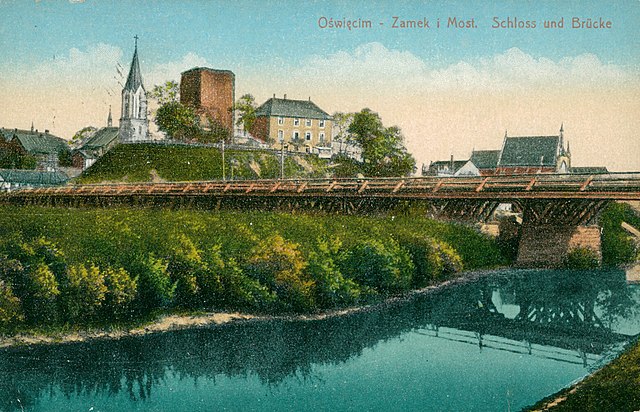The history of the Oświęcim Jewish community dates back to the first half of the 16th century. For over 400 years, Jewish life in Oświęcim developed rapidly. During the German occupation, in 1941, most of them were deported and later sent to the extermination camp in Bełżec.
At first, they occupied the northern part of the town and soon moved to its southern end, in the vicinity of the castle and today’s Berek Joselewicz Street. At that time, the Jews were engaged in propination, usury and specialised in the wholesale trade of Bochnia salt. They also built a wooden synagogue at that time and established a cemetery.
Over time, relations between the Polish townspeople and their Jewish neighbours deteriorated and King Sigismund Augustus issued a privilege for the town prohibiting newly arrived Jews from settling in Oświęcim. This came out of the royal chancellery in 1563. However, despite the restrictions, as if in defiance of the privilege, Jewish life in the town not only did not stop, but from the second half of the 16th century, the Jewish community and Jewish trade flourished. This lasted until the first half of the 17th century. During the wars with Sweden, Oświęcim was completely destroyed.
After the partition of Poland, the town was annexed by Austria. In time, Jews in the Austro-Hungarian monarchy, known as the monarchy of many nations, were allowed to self-govern and could develop their businesses without hindrance. The richer ones were involved in the production of vodka, liqueurs and sparkling waters. They also specialised in the tanning trade and construction. Well-known Jewish families of the time included: Enochs, Haberfelds and Henerbergs. The development of the Oświęcim railway and the founding of several major factories had a great impact on the state of the town’s economy.
After the Polish state regained its independence, the Jewish community of Oświęcim became actively involved in the work of the municipal government. In 1932, 18 of the 32 town councilors were Jewish, and in 1934, Dr Emil Samuel Reich became vice mayor. In the interwar period, Oświęcim also became an important centre of Hasidism.
After the German army entered the city in 1939 the Germans burnt down the synagogue and a year later a ghetto was established. During the German occupation, many Jews were deported to the forced labour camp at Saint Anna Mountain. Others were resettled in ghettos in Silesia, including Będzin and Sosnowiec. From there they were deported to the extermination camp in Bełżec.
Today, there is a thriving Jewish Centre in the town, with the mission of preserving the memory of Oświęcim’s Jews.





